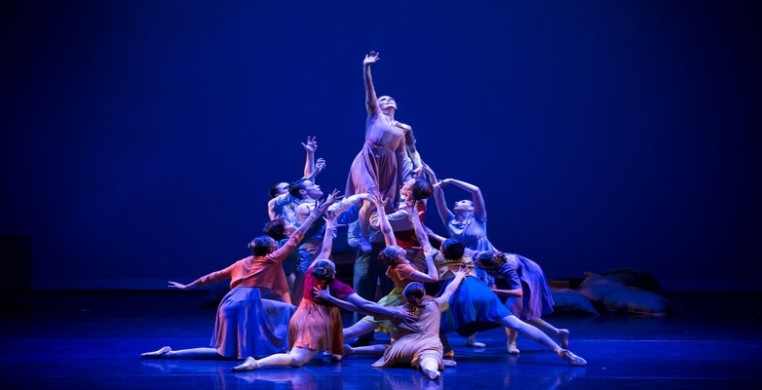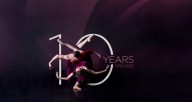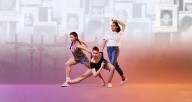Historically, ballet doesn't have the most shining record for female empowerment and is replete with anti-feminist views. It's no walk in the park being a woman in the world of ballet, with pressure to be slender, beautiful, graceful, and feminine.
Stiff competition for leads and solos gives men, fewer in numbers, an unfair advantage with more prominent casting a higher salary scale. In fact, the Dance Development Project reports a mere 22.9% of new work of the top 50 biggest ballet companies in the U.S. are by women artists.
On January 20, Ballet 5:8 threw all this to the wind on the stage during a preview of their upcoming season at Museum 21C . As the Preview Party demonstrated, it was a night celebrating power, resilience, equality, hope, and strength. Through thoughtful and touching storytelling, artistic director and lightning designer Julianna Rubio Slager maintains a lot of ballet components, but done on her terms, in her voice.
A voiceover by Angelina Dickinson provides commentary about class in Slager's "Butterfly." Executive Director Jeremy Slager explains it's from a poem, "The Butterfly - Version 2" by Pavel Friedman, written in the ghetto of Terezin on June 4 1942. Dancers Miranda Rubio Opsal, Sophia Sinder, and Ellington Nichols share this Holocaust tale.
Nichols, a holocaust descendant, plays Helga and spoke about her connection to the performance:
“As a great granddaughter of Holocaust survivors, the moment that strikes me is when we see Helga first enter Terezin and she is separated from her parents. This moment is small but so important. I can barely imagine what that would actually feel like in real life. Thousands of families were torn apart never to be the same…”
“Midway through the ballet we dance a section called Gorecke.” Continues Nichols. “It’s winter and we are starving. The music is beautifully tragic and the movement portrays the defeat and exhaustion the Jews were experiencing. This moment is particularly challenging because I am directly faced with the tragedy that so many suffered through, including my ancestors. We almost lose hope and that is what really scares me. The resilience that my great Grandma Helen, Helga Weiss, and so many others portrayed throughout such difficult moments gives me courage and pushes me to tell these stories and not let them be forgotten.”

In Slager's "The Sea Is Flat," a dancer draped in fabric with hues of blue and hair pulled up in a bun takes us on a journey of struggle and power. The turmoil is apparent as we watch her contract, reach, and pull frantically in a tumultuous sea. The lighting, the flow of the fabric with each movement, the music, and the dancer’s facial expressions are used to demonstrate the power and perseverance of women.
You can't help but think “you go girl!” After all, for as beautiful as the sea is, it's an incredibly powerful force.
Slager’s "The Lost Women Of Juarez" shifts gears from high seas to dry land. The stage is filled with ballerinas in gym shoes, a signal of their strength as this footwear is meant to be far more durable than ballet slippers.
Moments appear where they work shop the movement for a deeper understanding of it. This is paired with partnering to help create a narrative of community and sisterhood.
The ladies convey a beautiful story of raising the voices of women that have fallen on deaf ears as they go missing with no justice sought for them and fall victim to “femicide”. It's a touching call to action, to take a reflection of how we need to do better for women, and in this case women of color.
There are clear notes of inspiration from the Latinx experience and culture. It is fascinating to observe Latin flavors blend with ballet. These styles mixed with the storytelling make for compelling movement choices and choreography. Percussive sways, pivots, and musicality in the Latin vocabulary add uniqueness and captivation.
No doubt this is a nod to Slager being a member of the Chicana community and being moved by her fellow Chicanas’ stories. She's totally in the driver's seat, and it's fierce!
If you want content that has heart, hope, stunning movement, you won't be disappointed. Ballet 5:8 generates deeper dialogues surrounding how we see ballet, how women are treated and the hostile conditions they must navigate.
Ballet 5:8 presents “Butterfly” on February 11 at the Reva and David Logan Center, 915 E 60th St.; “Golden Sessions” on February 25 at the Athenaeum Center, 2936 N Southport Ave; and “The Lost Women of Juarez on April 20th at The Harris Theater, 205 E Randolph St. Tickets are available at Ballet 5:8.org or by clicking the event links below.




